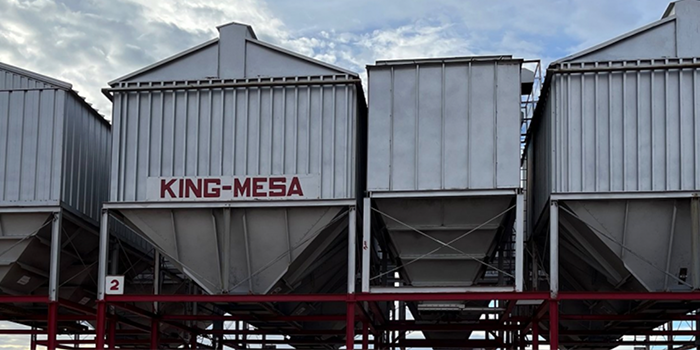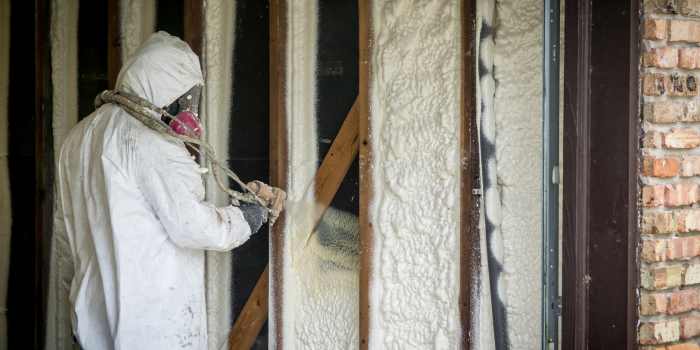NCFI'S Terra-LOK "Bales" Out Texas Cotton Gin

LAMESA, TX – December 20, 2023 – West Texas is no stranger to water troubles. This water problem however wasn’t too little in the growing fields, but too much in the cotton gin where cotton harvested from the field is mechanically cleaned. One of the largest cotton gins in what is being called by some "the capital of certified U.S. organic cotton," the King Mesa Gin in Lamesa, had a groundwater intrusion problem in the basement area called the “press pit.”
“King Mesa was experiencing extensive water intrusion in their bale press pit and needed to find a resolution to this problem before cotton ginning started in the fall,” says Patrick Burchett, technical manager for NCFI Polyurethanes’ Geotechnical Division (NCFI Geo), a company intimately involved in the cotton industry via its parent company Barnhardt Manufacturing Co. (Barnhardt). “They needed a good permanent solution, so they called in two companies—WTX Foundation Repair of Amarillo, Texas and Earth Contact Products (ECP), of Olathe, Kansas.”
According to Lewis Barnhardt, president, and COO of Barnhardt, one of the world’s largest cotton purifiers, and NCFI’s parent company, “The bale press at King Mesa is an up-packing bale press versus down-packing press, so the hydraulic ram presses up to make the bale. To have this type of press you must dig and install a deep concrete pit.”
The pit in which the primary unpacking happens at King Mesa is in the basement and contains dollies, chain conveyors, baggers, scales, and accumulators. Water intrusion in the pit can harm both the equipment and the cotton, but also the people working there. Barnhardt says, “Most cotton gins are in low water table regions and water seepage is a common problem. The main issue with water on the floor is safety. If someone has to go into the pit to work on the bale press or the ram, water is a safety hazard, and it could have an ill effect on mildew where the bales are compressed.”
ECP and WTX first assessed the damage to the press pit from the decades of changing water levels. “We drilled 3/8-inch holes in the mortar joints and found the backside of many of the concrete blocks had deteriorated from water damage,” says Aaron Grayham, SVP of sales and education for ECP. “Plus, three of the walls had voids ranging from two inches to six inches and up to eight feet in height from the floor.”
Grayham says ECP and WTX concluded that they would drill holes and inject NCFI Geo’s low viscosity, single component polymer resin called Terra-Lok— originally formulated for seawall construction and repair—at points behind the CMU block wall to create a continuous grout curtain stopping any further water intrusion into the bale press pit. They drilled the holes and pumped in the resin over the next four days. According to Grayham they used over 400 gallons of Terr-Lok behind the wall to form the monolithic waterproofing curtain.
Grayham says they originally discussed sealing the floor in the press pit as well, but King Mesa had no drawings of the double slab concrete floor and little knowledge of its construction, so ECP and WTX stopped at the wall repair. Within a few weeks, though, the veracity of the grout curtain was tested and as planned, the curtain forced incoming water away from the walls, but it was now coming up from cracks in the floor and around the floor’s perimeter.
Kevin Bendinskas, WTX’S general manager, says they went back to King Mesa to start phase two. “We found voids between the ten-inch-thick top slab and twenty-four-inch-thick bottom slab. It was rumored between the two slabs had a layer of sand eighteen-inch-thick, but we didn’t find evidence of that. The main goal was to seal and fill the void between the two slabs.” Bendinskas says drilling was the real issue. The ten-inch-thick floor turned into thirty-four inches in areas. “We quickly realized the concrete levels were all over the place, and there was a good possibility the bottom slab was broken in areas. The drill would get bound up going through a crack and get pinched. It took six drill bits to get through it and four days to pump in 350 gallons of Terra Lok to seal the foundation.”
Grayham says the results are ideal for King Mesa. “We got that press pit waterproofed and the floor sealed tight in time for the cotton harvest to roll in. They were pleased with the work and the whole Barnhardt-NCFI-King Mesa connection made it a pleasure to see how our hard work kept the world of textiles and health and beauty and hygiene supplied with cotton.”
Barnhardt adds, “The folks at King Mesa say this is the first time that they can remember the pit being dry after a heavy rain.”
ABOUT NCFI GEO
NCFI Polyurethanes got its start in 1964 and manufactures polyurethane foam systems for spray foam insulation (SPF), geotechnical, agricultural, SPF roofing, marine flotation, aerospace, molding, and many other uses. The company also offers a complete line of flexible foams for furniture, transportation, bedding, carpet underlay, and packaging. NCFI also has manufacturing plants in NC, GA, and TX. NCFI belongs to the Barnhardt Manufacturing Company, Inc. family of companies. To learn more about our geotechnical products and services visit www.ncfigeo.com
For use by SprayFoamMagazine.com & Spray Foam Magazine
Disqus website name not provided.










































